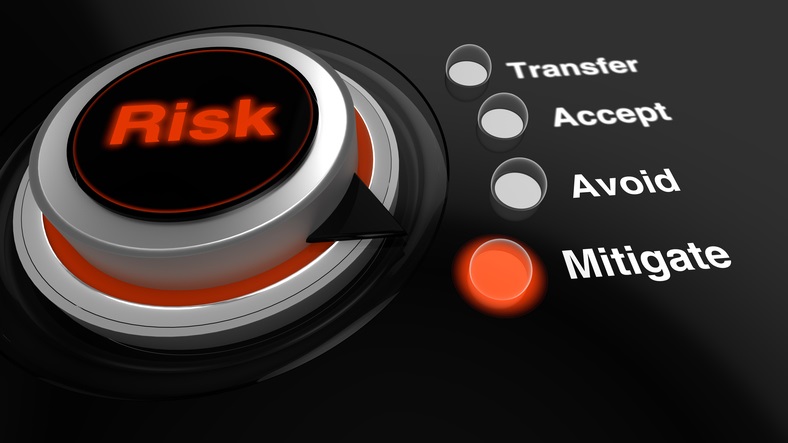While there are basic safety precautions that should be considered and exercised no matter where a traveler is headed, destinations designated as ‘high-risk environments’ require even more research and planning before an organization commits to sending its travelers to these locations. Acquiring and utilizing such information appropriately allows an organization to meet one component of its duty of care responsibilities as well.
In this two-part blog post, Global Security Specialists Nicholas D’Intino and Raynold Lyngdoh share common issues that can help facilitate discussions within organizations conducting or planning operations in high-risk destinations.

Financial Transactions:
Whether it is a short-term visit or a long-term stay, reliable access to funds for operational and daily expenses should be a priority for any organization operating in high-risk areas. Varying factors can pose potential difficulties for constituents trying to get cash or conduct financial transactions. ATMs (if they exist) may be monitored by opportunistic thieves. Furthermore, in many high-risk areas, credit and debit cards are not accepted. This poses an issue because constituents stationed in the country will need access to local currency and banking facilities. One potential solution is to provide travelers with contact information for pre-vetted, reputable banks in-country, with trusted contacts at said institutions to help conduct transactions safely. On a larger scale, if an organization needs to deposit or withdraw large sums of money on a regular basis, they should ensure they have pre-identified secure methods to carry out these transactions, such as leveraging the services of an assets/cash/valuables in-transit company.
Corruption and Bribery:
There are undoubtedly many ethical, moral, and legal considerations relative to this issue. Operating in high-risk destinations can mean constituents may encounter circumstances where, manifestly or latently, bribes or corrupt practices are expected. Some potential questions worth asking include: Is there a history of bribery and corruption in the location? If so, what is the organization’s comfort level with this? Does the organization already have anti-corruption policies and procedures in place regarding how constituents should react in these situations? Have these policies been audited recently and do they need revision in light of changes on-the-ground? Is it plausible to expect constituents to operate in such locations without paying bribes, and are they committed to abiding by the organization’s policies? Deviation from the norm has the potential to bring about economic and reputational liabilities.
Underdeveloped Infrastructure:
Many high-risk environments have underdeveloped infrastructure that can significantly exacerbate an emergency situation if pre-emptive mitigation steps have not been implemented. Unpaved roadways, for example, make traveling even short distances much more time-consuming and far more perilous than expected. In some instances, public transit can be unsafe or even nonexistent. All in-destination travel in potentially hostile locations, no matter how short, should involve careful route planning that avoids the most dangerous areas of the environment. Often, the shortest route to a location may not necessarily be the safest way to go. Taking into account details like the day of the week, time of day, and updated on-the-ground information, can serve constituents well prior to departure from local accommodations or meeting locations.
Organizations should also consider how such infrastructure, or lack thereof (roads, public transit options, hospitals, communication services, access to reliable supplies etc.), could intensify issues during an emergency situation, either manmade or natural. If this is the case, organizations should consider whether they have the risk appetite and/or capabilities to address potential emergencies. For example, finding an appropriate clinic to treat a broken ankle in Paris, France, is far less likely to be an issue as compared to identifying a similarly capable clinic in a village in Arunachal Pradesh, India for the same injury. This does not necessarily mean that such a clinic doesn’t exist, but it may take a lot more pre-trip planning to determine where such assistance can be acquired.
Telecommunications:
As part of the infrastructure assessment process, organizations should look into and address all their telecommunication options. How will communication be conducted? Multiple levels and varying methods of communication are often necessary to safely and successfully operate in high-risk environments. However, such destinations, due to the aforementioned lack of infrastructure development, may not have quality cell service or widely available Wi-Fi connectivity. Utilizing satellite phones could be an option; however, some countries have very stringent laws surrounding the transport and utilization of satellite phones. Not only will travelers need to be able to communicate with one another, but communication lines between those individuals in-country and the organization’s headquarters will also be necessary. Furthermore, should an emergency situation occur, are there systems in place and designated personnel to liaise with constituents’ family members? Communication is key, and organizations should put communication systems to the test on a regular basis.
Conclusion:
Even if an organization has never faced an emergency while operating in a high-risk location, it is prudent to avoid complacency and ensure crisis response plans have been addressed and are up-to-date. Be sure to check out Part 2 of this blog series, where we’ll be sharing more considerations for organizations operating in high-risk destinations.
Want more information regarding high-risk travel planning and holistic travel risk management? Contact us today.
For over 25 years, On Call International has provided fully-customized travel risk management and global assistance services protecting millions of travelers, their families, and their organizations. Contact us today and watch our video to learn more. You can also stay in touch with On Call’s in-house risk management, travel health and security experts by signing up for our quarterly Travel Risk Management (TRM) newsletter.


